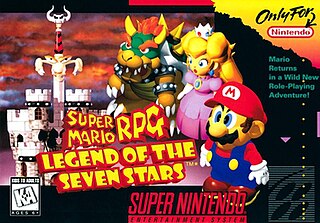
Super Mario RPG: Legend of the Seven Stars is a role-playing video game developed by Square and published by Nintendo for the Super Nintendo Entertainment System in 1996. It was the final Mario game published for the SNES. The game was directed by Chihiro Fujioka and Yoshihiko Maekawa, produced by Shigeru Miyamoto, and scored by Yoko Shimomura.
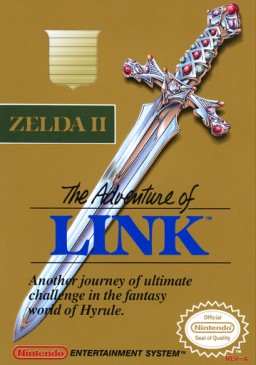
Zelda II: The Adventure of Link is an action role-playing video game with platforming elements developed and published by Nintendo. It is the second installment in the Legend of Zelda series and was released in Japan for the Famicom Disk System on January 14, 1987—less than one year after the Japanese release and seven months before the North American release of the original The Legend of Zelda. Zelda II was released in North America and the PAL region for the Nintendo Entertainment System in late 1988, almost two years after its initial release in Japan.
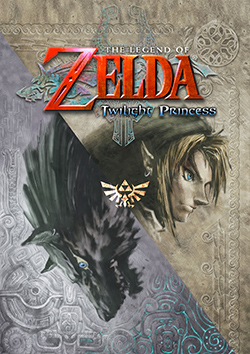
The Legend of Zelda: Twilight Princess is an action-adventure video game developed and published by Nintendo for the GameCube and Wii. Originally planned for release exclusively on the GameCube in November 2005, Twilight Princess was delayed by Nintendo to allow its developers to refine the game, add more content, and port it to the Wii. The Wii version was a launch game in North America in November 2006, and in Japan, Europe, and Australia the following month. The GameCube version was also released in December 2006 as the final first-party game for the console.

Cave Story is a 2004 Metroidvania platform-adventure game for Microsoft Windows. It was developed over five years by Japanese independent developer Daisuke "Pixel" Amaya in his free time. Cave Story features 2D platform mechanics and is reminiscent of the games Amaya played in his youth, such as Metroid and Castlevania. After its initial self-published release, the game slowly gained popularity on the internet. It received widespread critical acclaim for many polished aspects of its design, such as its compelling characters, setting, story, and gameplay. Cave Story is considered by many as the quintessential indie game because of its one-person development team and influence on the video gaming world.

Toki Tori is a puzzle video game with platform elements, released by Capcom in September 2001 for the Game Boy Color. It was developed by Dutch video game development company Two Tribes and is their first published video game. The game follows a young chick, Toki Tori, and his quest to rescue his younger siblings, still in their eggs. To progress through the game, the player must pick up each egg on a level using a set number of tools, with new tools being introduced as the player progresses through the four worlds. This usually involves careful planning and creative thinking.

Dragon Quest Swords: The Masked Queen and the Tower of Mirrors is a role-playing video game developed by Genius Sonority and 8ing and published by Square Enix for the Wii game console. The game is a spin-off from the Dragon Quest series, and was first released in Japan in July 2007, and worldwide the following year.

WarioWare: Smooth Moves is a party video game developed by Nintendo SPD and Intelligent Systems. The game was published by Nintendo for its Wii video game system in Japan in December 2006, and in Europe, North America, and Australia in January 2007. It is the fifth game in the WarioWare series of games, and the only game in the series to be physically released for the Wii. Like its predecessors, WarioWare: Smooth Moves is built around a collection of microgames that last about five seconds each, and which require that the player hold the Wii Remote in specific positions. The game offers the microgames to the player in rapid succession, by first instructing the player to hold the Wii Remote in a specific manner, and then showing them the microgame. The microgames are divided into several stages, each of which loosely connects the microgames with the help of a story. Additionally, this was the first spin-off Mario game to be released for the console.

Final Fantasy Crystal Chronicles: My Life as a King is a video game developed for the WiiWare service of the Wii console by Square Enix. Square Enix decided to make a game for the WiiWare service that would be high profile, and it was decided that the game would be a simulation game and, later in development, a Final Fantasy title.
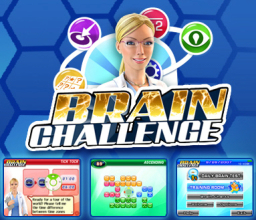
Brain Challenge is a mental exercise video game, featuring "brain exercise puzzles". The game was developed by Gameloft Beijing for mobile phone and iPod and released on September 5, 2007. In 2008 was followed by a Nintendo DS version on January 8, an Xbox Live Arcade release on March 12, and a PlayStation 3 launch on November 27. The N-Gage 2.0 version was released on the day of the service's launch, April 3, 2008. A version for WiiWare was released in autumn 2008 on all three regions. The Wii version also uses Miis for the players profile. OnLive also had launched their new streaming game platform with Brain Challenge on July 27, 2010. The game was released for Mac OS X in January 2011.

Pop is a WiiWare and iOS video game by Australian developer Nnooo. The game was released in North America on May 12, 2008 as a WiiWare launch title, and in Europe on July 4, 2008. It was released by Electronic Arts in Japan on July 29, 2008. The iOS version was released on the App Store on March 5, 2009. The game was also released for the DSiWare service under the title Pop+ Solo.

Gyrostarr is a shoot 'em up video game developed and published by High Voltage Software. It is one of several video games released only as WiiWare through the Wii Shop Channel, because of this, the game is no longer purchasable due to the shutdown of the Wii Shop Channel. It was released in North America on June 23, 2008.

Pong Toss! Frat Party Games, known in Europe as Beer Pong! Frat Party Games, is a 2008 party video game developed by JV Games for the Wii's WiiWare digital distribution service. The premise is based on the party game beer pong, which requires players to toss ping pong balls into plastic cups filled with alcohol. The developers conducted a test to see how players play beer pong, and implemented motion controls in an attempt to make the game more fun. It was first released in North America in 2008, and then in Europe the following year.

Space Invaders Get Even is a video game by Taito for the Wii. Originally intended as a retail release, the game was released as a downloadable WiiWare game instead. It was released in Japan on August 26, 2008, in Europe on November 7, 2008, and in North America on December 1, 2008. Outside Japan the game is published by Square Enix.
MaBoShi: The Three Shape Arcade is a WiiWare puzzle video game developed by Mindware Corp. Its Japanese title, Katachi no Game: Maru Bou Shikaku. It was released in Europe on August 29, 2008, in Japan on October 7, 2008, and in North America on December 29, 2008.
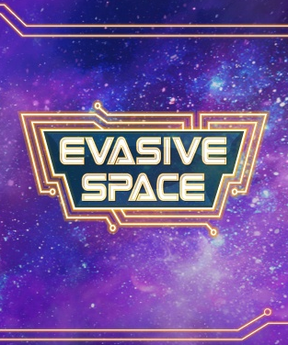
Evasive Space is an action video game developed by High Voltage Software and published by Akinai Games. It is one of several video games released as WiiWare through the Wii Shop Channel. It was released in North America on February 16, 2009 and in Japan on April 7, 2009.

Sandy Beach is a video game developed by Frozen Codebase and published by Konami for the Wii's WiiWare digital distribution service. It has been released in North America, Japan and the PAL region.

Adventure Island: The Beginning, known in Japan as Takahashi Meijin no Bōken Jima Wii, is a platform game released for the Wii's WiiWare service. It was developed and published by Hudson Soft.
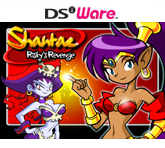
Shantae: Risky's Revenge is a platform video game developed by WayForward Technologies for the Nintendo DSi. The second installment in the Shantae series, Risky's Revenge is the sequel to the 2002 Game Boy Color video game Shantae, and follows series protagonist Shantae as she sets out to stop the ambitions of the nefarious pirate Risky Boots.

No More Heroes is an action-adventure hack and slash video game developed by Grasshopper Manufacture for the Wii. It was released by Marvelous Entertainment in Japan in 2007, Ubisoft in North America and Rising Star Games in PAL territories in 2008. The game was directed, designed, and written by Goichi Suda, also known by his nickname Suda51. The game follows Travis Touchdown, an otaku who wins a beam katana in an auction, from which he inadvertently becomes involved in the United Assassins Association and forced to kill assassins higher in rank to prevent other assassins from targeting him.

XGen Studios, Inc is an independent video game development studio based in Edmonton, Alberta, Canada.

















